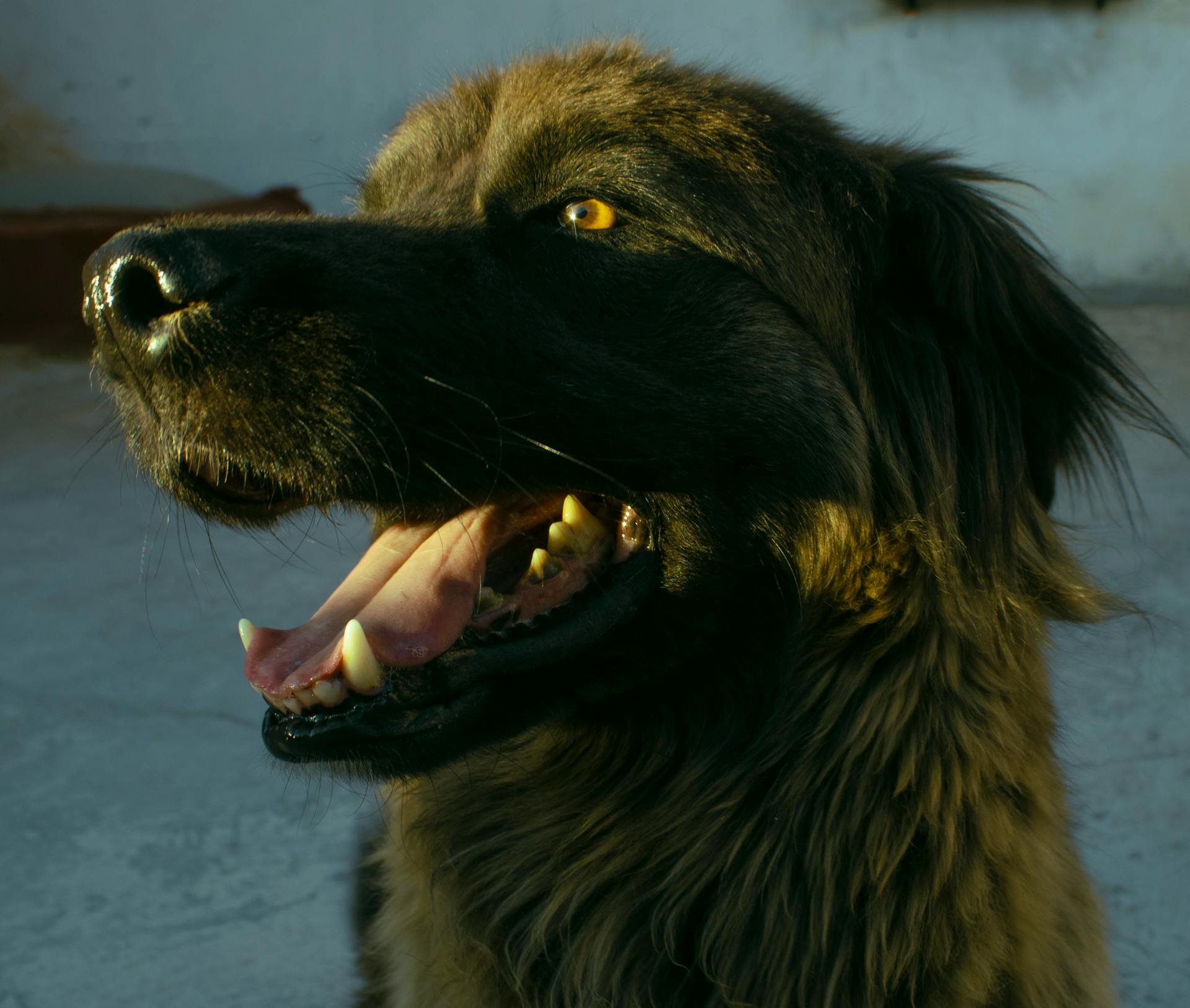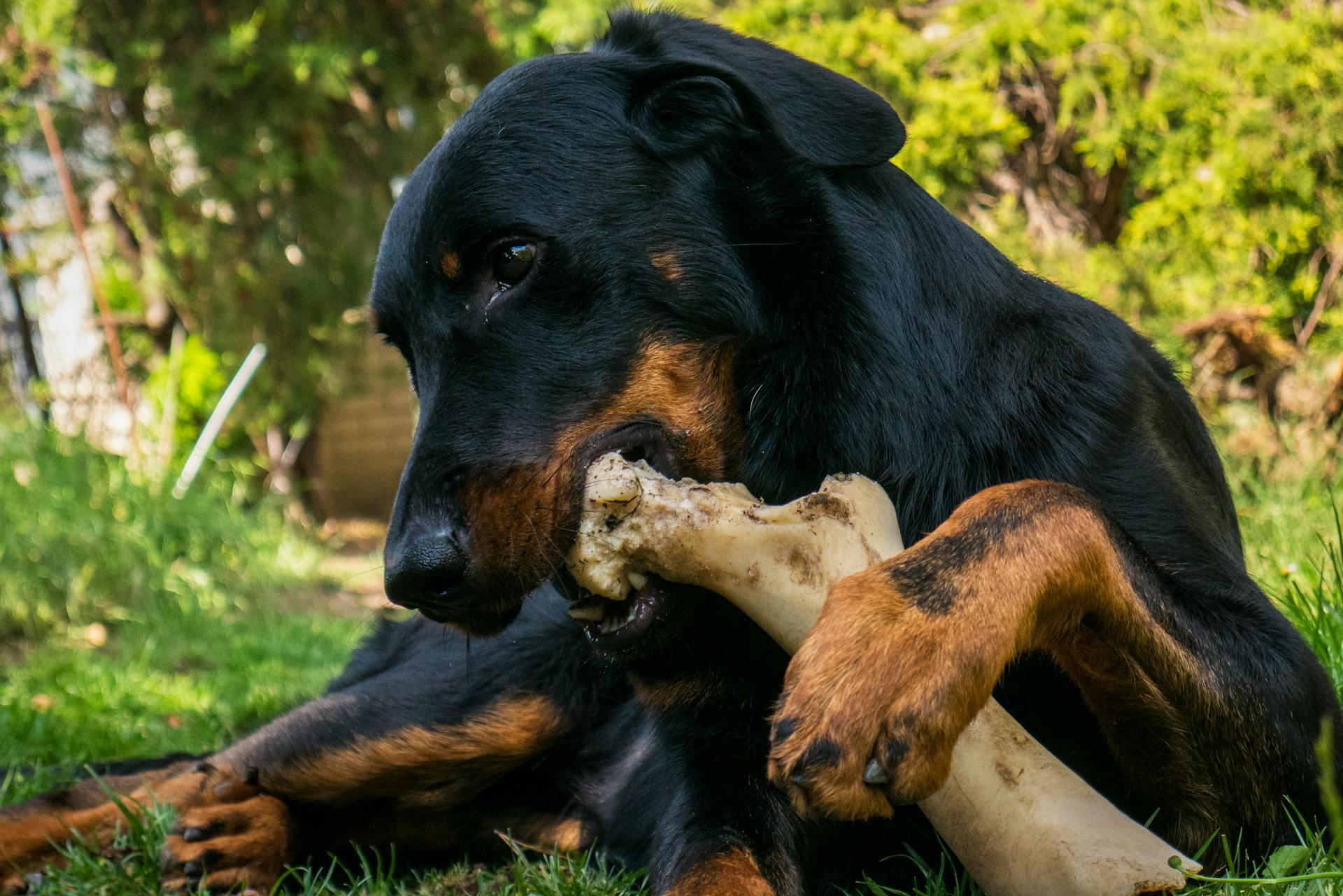
Cane Corsos are known for their impressive bite force, which can be a double-edged sword. Cane Corsos have a bite force of around 700 pounds per square inch (PSI), making them one of the breeds with the strongest bite in the world.
This immense bite force is due to their unique jaw structure, which is designed for powerful gripping and crushing. Cane Corsos have a distinctive jaw shape and a powerful neck, allowing them to exert a significant amount of force with their bite.
Their bite force is a result of their evolution as a guard dog breed, where they were bred to protect and defend their families and territories. As a result, their bite force is a natural consequence of their breeding and selection history.
Cane Corso Breed
The Cane Corso breed has a storied history as a guard dog and hunter, valued for its strength and courage.
Their impressive bite force of 700 PSI is a reflection of their robust nature and utility in roles that require a dog to be both protective and resilient.
The Cane Corso is a large breed, typically weighing 80-120 pounds and standing 25-27 inches tall.
This powerful breed is known for its loyalty, intelligence, and protective nature, while also being aloof with strangers.
They bond closely with their family and love to play games, making them a great companion for active families.
The Cane Corso is generally a healthy breed, but they can be prone to hip dysplasia and other joint issues.
To keep your Cane Corso happy and healthy, provide plenty of exercise and mental stimulation, with at least an hour of physical activity per day.
Here are some key characteristics of the Cane Corso breed:
The Cane Corso's impressive bite force is a result of their robust nature, but it's essential to remember that early socialization and training are crucial to ensure their bite force is only used on chew toys.
Bite Force and Strength
Cane Corsos are known for their impressive bite force, with some individuals reaching up to 700 pounds per square inch (PSI).
Their strong jaws and powerful muscles allow them to exert a considerable amount of force with each bite.
Cane Corsos have a relatively short, broad skull compared to other breeds, which contributes to their powerful bite.
This unique skull structure also helps to distribute the force of their bite more evenly.
Their bite force is strong enough to crush bones, but it's not usually directed at humans unless they feel threatened or are in pain.
Cane Corsos are generally not aggressive dogs and are known for their loyalty and affection towards their families.
Additional reading: Training Dog Not to Bite
Measuring Bite Force
Measuring a Cane Corso's bite force is a complex task that requires careful consideration of several factors. The force exerted by a Cane Corso's bite is measured in pounds per square inch (psi), with most breeds averaging around 230-250 psi.
A dog's behavior, breed, and the substance being bitten all play a role in determining their bite force. For instance, the Kangal breed has a bite force of 743 psi, significantly higher than the average.
Measuring a dog's bite force can be done using a transducer, which calculates the force based on the dog's size, breed, and mood. This method takes into account the dog's weight and reveals that bite force varies depending on weight, rather than the dog's head configuration or jaw muscle mass.
A bite force meter, strain gauges, and computational modeling are some of the devices and techniques used to measure a dog's bite force accurately. These methods help contribute to forensic investigations and progress in veterinary medicine.
For your interest: What Is the Purpose of Biting a Dog's Ear?
Creating Our List
We considered various anatomical factors to rank dog breeds by predicted bite force. Body size and skull size are key considerations, as larger breeds tend to have more powerful jaws.
Muzzle length and width also play a role, with breeds having a longer, wider muzzle often having a stronger bite force. Neck strength and stability are also important, as a sturdy neck can support a powerful jaw.
The masseter and temporalis muscles, which control the jaw, are crucial in determining a breed's bite force. Breeds with larger, more developed muscles in these areas tend to have a stronger bite force.
Occlusion of teeth, or the alignment of teeth, is another factor we considered. Breeds with normally aligned teeth are more likely to have a strong bite force.
Some breeds have a combination of these characteristics, which puts them at the top of our list.
How to Measure
Measuring bite force is a complex task that requires careful consideration of various factors.
A dog's bite force is measured in pounds per square inch (psi), with most breeds averaging 230-250 psi. However, some breeds like the Kangal have been recorded to have an astonishing 743 psi.
Measuring a dog's bite force can depend on several components, including the substance being bitten, the dog's behavior, and the dog's breed. Studies show that using a transducer can calculate a dog's bite force, taking into account their size, breed, and mood.
There are several methods to measure a dog's bite force, including physical testing devices and mathematical models. Mathematical models consider the size and shape of a dog's skull and the mass and architecture of their jaw muscles to estimate their bite force.
To accurately capture bite force data, a variety of devices and techniques have been developed, including bite force meters, strain gauges, and computational modeling. These methods are not without their challenges, as the unpredictability of a dog's chewing actions can complicate direct measurements.
Here are some key considerations when measuring a dog's bite force:
- Body size and skull size
- Muzzle length and width
- Neck strength and stability
- Masseter and temporalis muscle mass
- Occlusion of teeth
These factors are crucial in determining a dog's potential bite force, and can be used to estimate their capacity for damage if they were to bite.
Safety Concerns
The Cane Corso is a powerful breed that requires careful handling and training to ensure safety for everyone involved.
Their strength and size can make them dangerous if not properly trained or handled by experienced owners.
It's essential to remember that Cane Corsos are inherently friendly and loving creatures.
Responsible owners should always take the necessary steps to ensure their Cane Corso is well-trained, socialized, and supervised when interacting with other people or animals.
Proper training and socialization from a young age can help prevent potential incidents involving powerful breeds like the Cane Corso.
Victim Compensation Options
Victims of dog bites can file a personal injury claim and seek compensation from the dog owner’s insurance policy for physical and emotional damages.
This can help cover medical expenses and other related costs.
If you're a victim of a dog bite, seeking compensation can help alleviate some of the financial burden.
Filing a personal injury claim can provide you with the financial support you need to recover from your injuries.
Comparison and Other Animals
Cane Corsos have a bite force of around 700 pounds per square inch (psi), which is impressive, but not the strongest among dogs. The Kangal Dog, for example, has a bite force of up to 743 psi.
The Cane Corso's bite force is still strong enough to exert a significant amount of pressure, making it a formidable breed. In comparison, the Doberman Pinscher has a bite force of around 600 psi.
Other animals, like the crocodile, have an even more impressive bite force, with some species reaching up to 5,000 psi.
20 Breeds with the Strongest Build
When evaluating breeds with the strongest build, we need to consider their physical characteristics. Body size and skull size are crucial factors to consider.
Breeds with larger body and skull sizes tend to have a stronger build. The Kangal, for example, has a massive body size and skull size, contributing to its impressive bite force of 743 PSI.
To determine which breeds have the strongest build, we can look at their muzzle length and width. A longer and wider muzzle can indicate a stronger build.
The Cane Corso and English Mastiff have impressive muzzle lengths and widths, reflecting their strong physical capabilities.
Readers also liked: Boston Terrier Skull
In addition to body size and muzzle length, we should also consider neck strength and stability. A strong neck can support a powerful bite.
The breeds listed in the article, such as the German Shepherd, have strong necks that enable them to deliver a powerful bite.
Here are some breeds with the strongest build, based on the physical characteristics mentioned:
Other Animals
The Cane Corso's bite force is impressive, but it's not the strongest among predators. The European lynx has a bite force of 213.0 to 329.7 N, which is relatively weak compared to other animals.
The cheetah, on the other hand, has a bite force of 325.6 to 475.1 N, which is stronger than the Cane Corso's bite. However, there are some animals that are a great deal stronger.
Here's a comparison of the bite forces of some predators:
The jaguar has a bite force of 879.5 to 1,348.0 N, which is significantly stronger than the Cane Corso's bite. The lion and tiger also have strong bite forces, ranging from 1,198.6 to 1,833.1 N and 1,234.3 to 1,839.0 N, respectively.
Take a look at this: Shiba Inu 1 Cent
Frequently Asked Questions
Is a Cane Corso bite force stronger than a lion?
Yes, a Cane Corso has a stronger bite force than a lion, with an estimated 700 pounds per square inch (PSI) compared to a lion's 600 PSI. This impressive bite force is one of the reasons why Cane Corsos are considered a powerful breed.
How strong is 700 PSI bite force?
A bite force of 700 PSI is equivalent to exerting 700 pounds of pressure on every square inch of what it's biting, making it one of the strongest dog bites in the world. This is significantly stronger than the average lion's bite force, and a key characteristic of the Cane Corso breed.
What dog has a 700 PSI bite?
The Cane Corso has a powerful bite, exerting over 700 PSI of force. This makes it one of the strongest bites among dog breeds.
What mastiff breed has the strongest bite?
The English Mastiff has the strongest bite force, capable of generating up to 552 psi, making it the most assertive breed of dog in the world. This powerful bite is likely due to their origins as fighting dogs.
Is Cane Corso bite stronger than Pitbull?
The Cane Corso has a significantly stronger bite than the Pitbull, with a bite strength of 700 PSI compared to the Pitbull's 235 PSI. This makes the Cane Corso one of the breeds with the strongest bites among all dog types.
Sources
- https://www.hepper.com/dog-breeds-with-strongest-bite-force/
- https://www.dogster.com/dog-breeds/dog-breeds-with-the-strongest-bite-force
- https://www.legalasap.com/personal-injury/20-breeds-with-the-strongest-bite-force/
- https://wewin.com/dog-bite-force-chart/
- https://www.hepper.com/how-strong-is-a-cane-corsos-bite-force/
Featured Images: pexels.com


